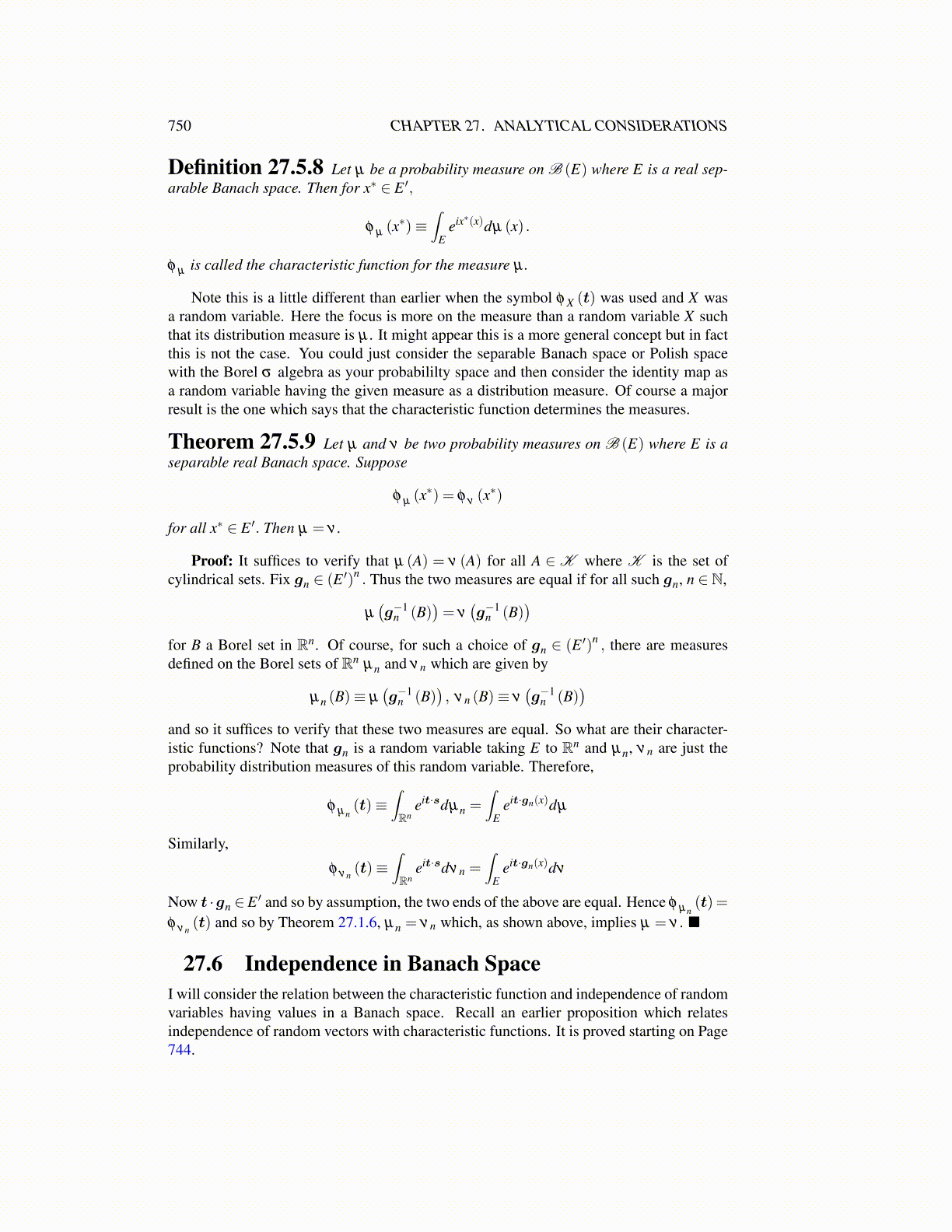
750 CHAPTER 27. ANALYTICAL CONSIDERATIONS
Definition 27.5.8 Let µ be a probability measure on B (E) where E is a real sep-arable Banach space. Then for x∗ ∈ E ′,
φ µ (x∗)≡
∫E
eix∗(x)dµ (x) .
φ µ is called the characteristic function for the measure µ .
Note this is a little different than earlier when the symbol φ X (t) was used and X wasa random variable. Here the focus is more on the measure than a random variable X suchthat its distribution measure is µ . It might appear this is a more general concept but in factthis is not the case. You could just consider the separable Banach space or Polish spacewith the Borel σ algebra as your probabililty space and then consider the identity map asa random variable having the given measure as a distribution measure. Of course a majorresult is the one which says that the characteristic function determines the measures.
Theorem 27.5.9 Let µ and ν be two probability measures on B (E) where E is aseparable real Banach space. Suppose
φ µ (x∗) = φ ν (x
∗)
for all x∗ ∈ E ′. Then µ = ν .
Proof: It suffices to verify that µ (A) = ν (A) for all A ∈ K where K is the set ofcylindrical sets. Fix gn ∈ (E ′)n . Thus the two measures are equal if for all such gn, n ∈ N,
µ(g−1
n (B))= ν
(g−1
n (B))
for B a Borel set in Rn. Of course, for such a choice of gn ∈ (E ′)n , there are measuresdefined on the Borel sets of Rn µn and νn which are given by
µn (B)≡ µ(g−1
n (B)), νn (B)≡ ν
(g−1
n (B))
and so it suffices to verify that these two measures are equal. So what are their character-istic functions? Note that gn is a random variable taking E to Rn and µn, νn are just theprobability distribution measures of this random variable. Therefore,
φ µn(t)≡
∫Rn
eit·sdµn =∫
Eeit·gn(x)dµ
Similarly,
φ νn(t)≡
∫Rn
eit·sdνn =∫
Eeit·gn(x)dν
Now t ·gn ∈E ′ and so by assumption, the two ends of the above are equal. Hence φ µn(t) =
φ νn(t) and so by Theorem 27.1.6, µn = νn which, as shown above, implies µ = ν . ■
27.6 Independence in Banach SpaceI will consider the relation between the characteristic function and independence of randomvariables having values in a Banach space. Recall an earlier proposition which relatesindependence of random vectors with characteristic functions. It is proved starting on Page744.